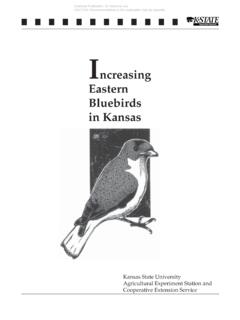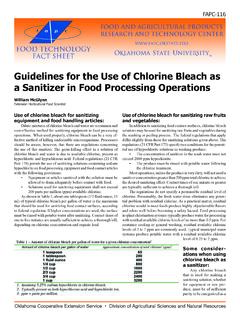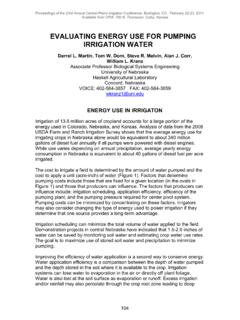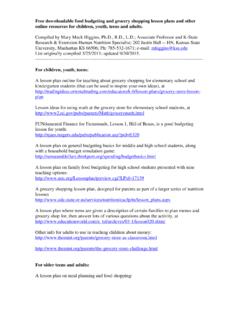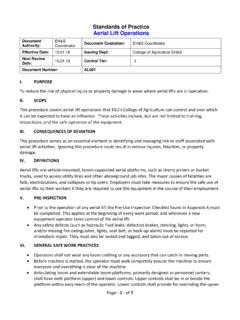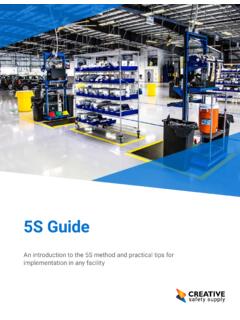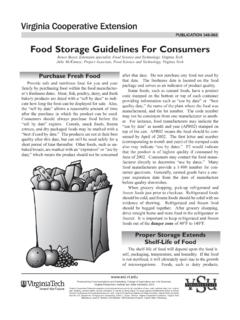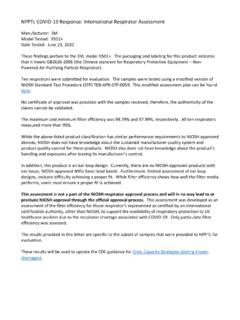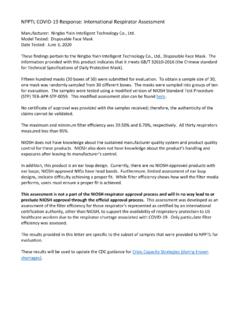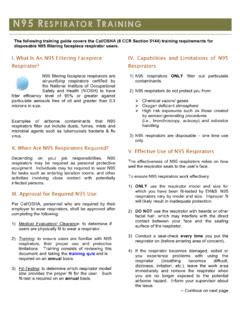Transcription of Form for Voluntary Respirator Use: Appendix D
1 Form for Voluntary Respirator Use: Appendix DSome COA employees, students, or affiliates may choose to use filtering facepiece respirators, also referred to as N95 or N99 disposable dust masks, on a Voluntary basis during activities that involve exposures to low-level, non-hazardous nuisance dust or other similar particulate. According to the COA Respiratory Protection Program and Occupational Safety and Health Administration (OSHA) regulations, KSU must provide you with the following information if you wear a filtering facepiece Respirator voluntarily. The following information is copied from the OSHA Respiratory Protection Standard and pertains to the Voluntary use of respirators. After reading the information below, please complete the section at the end of this form. Appendix D to Sec. (Mandatory) Information for Employees Using Respirators When Not Required Under the Standard Respirators are an effective method of protection against designated hazards when properly selected and worn.
2 Respirator use is encouraged, even when exposures are below the exposure limit, to provide an additional level of comfort and protection for workers. However, if a Respirator is used improperly or not kept clean, the Respirator itself can become a hazard to the worker. Sometimes, workers may wear respirators to avoid exposures to hazards, even if the amount of hazardous substance does not exceed the limits set by OSHA standards. If your employer provides respirators for your Voluntary use, or if you provide your own Respirator , you need to take certain precautions to be sure that the Respirator itself does not present a hazard. You should do the following: 1. Read and heed all instructions provided by the manufacturer on use, maintenance, cleaning and care,and warnings regarding the respirators Choose respirators certified for use to protect against the contaminant of concern.
3 NIOSH, the NationalInstitute for Occupational Safety and Health of the Department of Health and Human Services,certifies respirators. A label or statement of certification should appear on the Respirator or respiratorpackaging. It will tell you what the Respirator is designed for and how much it will protect Do not wear your Respirator into atmospheres containing contaminants for which your Respirator is notdesigned to protect against. For example, a Respirator designed to filter dust particles will not protect youagainst gases, vapors, or very small solid particles of fumes or Keep track of your Respirator so that you do not mistakenly use someone else's filtering facepiece Respirator you have elected to use is approved, when fitted properly, for use against nuisance non-hazardous particulate ( , fiberglass, sheet rock dust, sawdust, dirt, pollen, animal dander).
4 It will not provide protection from any chemical vapors such as those associated with spray paints or solvents. It is not intended for use during work that may involve exposure to airborne asbestos fibers, silica dust, or lead dust. Work you perform that may involve airborne asbestos fibers, silica dust, or lead dust should be reviewed by the EH&S Office before the project proceeds. If you have questions concerning any of this information, please call the EH&S Office at Please complete the section below: Name (print):_____Job Classification_____ Department:_____PI/Supervisor:_____Locat ion of use:_____ Reason for using dust mask (describe nature of work, specific location, and type of dust): _____ I have read and understood the information provided above: _____
